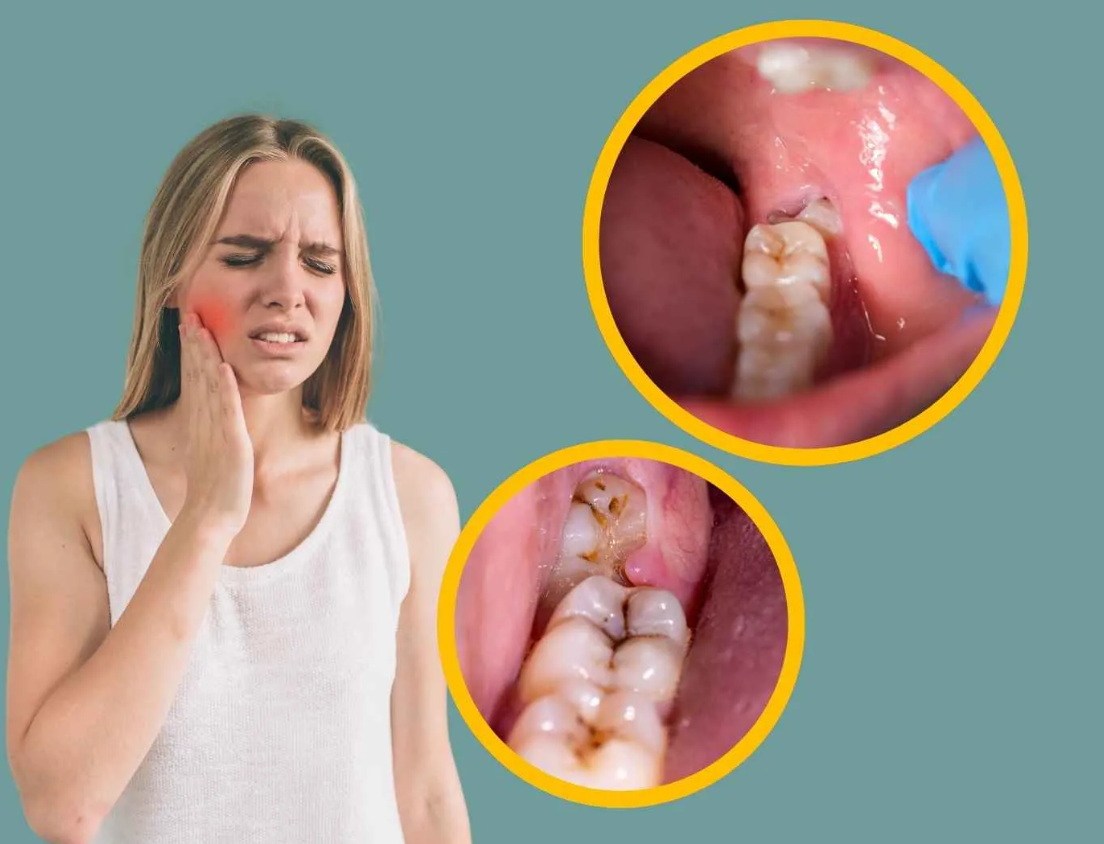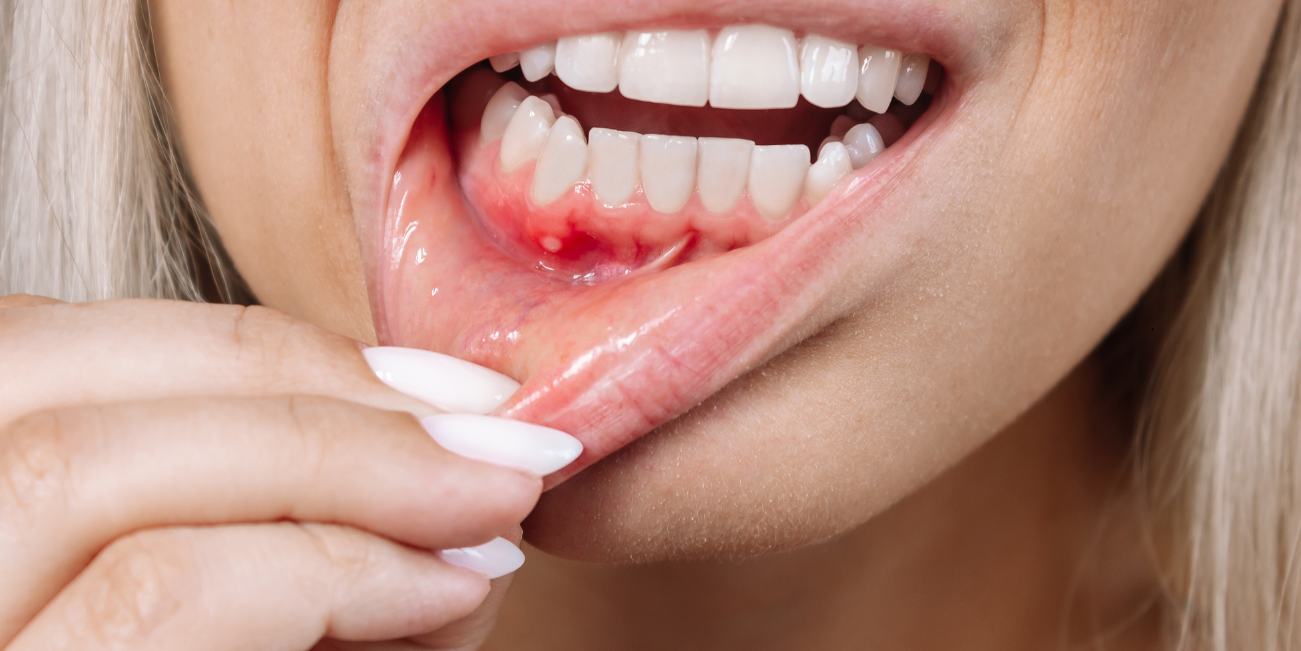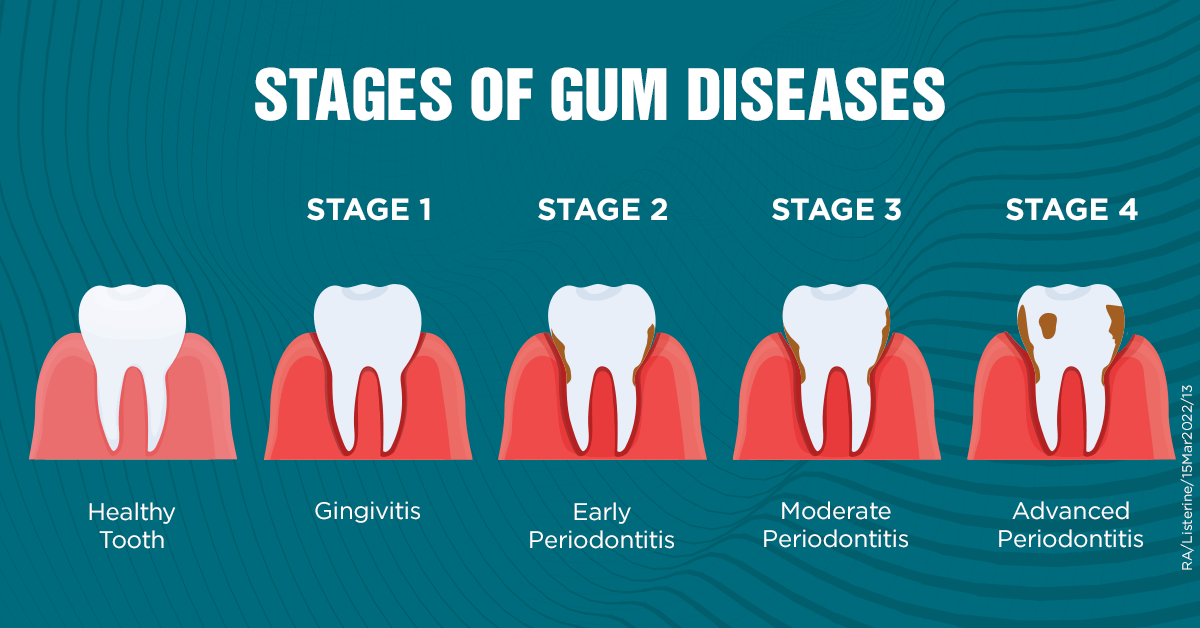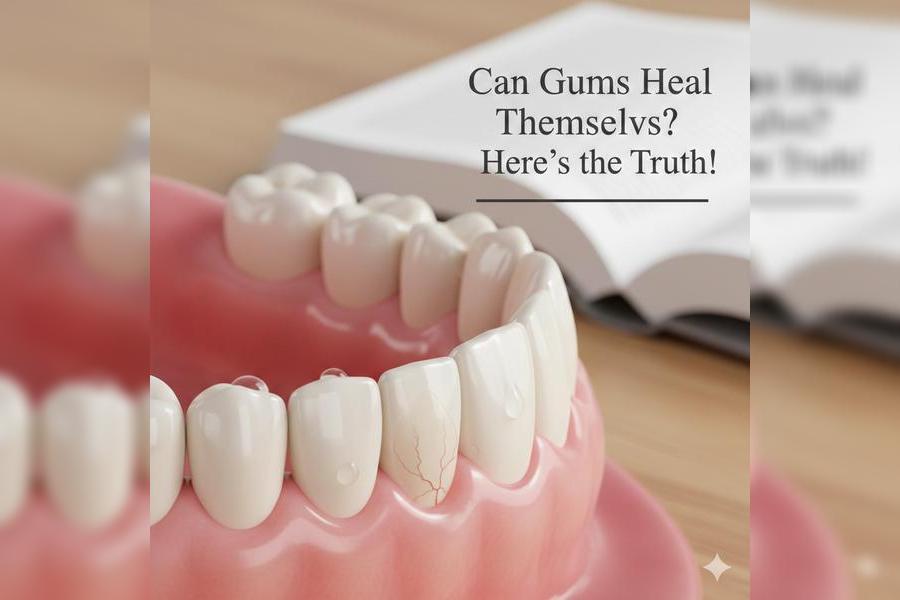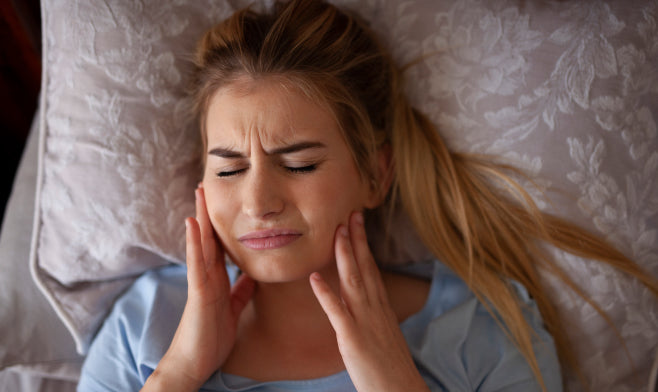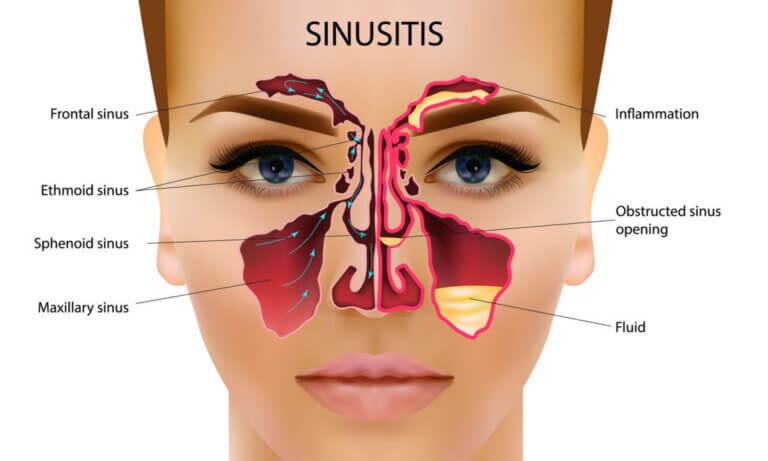Have you ever been chewing something and suddenly felt a nagging ache right behind your last molar and thought: why do my gums hurt in the back of my mouth? It’s that weird, hard-to-reach area where you can’t see clearly, and you’re left wondering whether it’s nothing, or something that needs your attention. That pain is your body’s way of raising a red flag.
Fortunately, this discomfort doesn’t always mean something major, and you can take action to ease it and prevent it. In this post we’ll dive into what might be causing that back-gum ache, how you can tell what’s going on, and what you can do right now , including introducing a highly effective natural solution that can help keep your gums healthier moving forward.
If you’re ready to stop asking “why do my gums hurt in the back” and start finding real relief, let’s go.
The Reason To Why Your Gums At The Back Feel Sore
When you experience pain at the rear of the gum line, you might wonder “why do my gums hurt in the back” specifically, while the rest of your gums seem fine. Here’s what’s often happening:
Gum tissue behind your molars (or wisdom teeth) is a bit of a tricky zone. It’s hard to clean well, it sees heavy chewing forces, and sometimes it’s subject to events like partial eruption of a tooth or food getting stuck. All of these factors can irritate the tissue. If bacteria get beneath the gum flap or in a deep pocket, the area can react with inflamed, tender, or swollen gums in the back of your mouth.
Key things your back-gum area might be signaling:
-
The gum behind a molar is irritated because you’re brushing or flossing less effectively there.
-
A tooth (maybe your wisdom tooth) is emerging or has emerged partially and the gum tissue around it is under stress.
-
There’s some infection, trauma, or gum disease activity starting in that “hard to reach” back region.
So whenever you catch yourself thinking “why do my gums hurt in the back”, it’s good to recognise you’re dealing not just with “gum pain” but something that may involve hidden pockets, difficulty cleaning, and bacterial buildup.
Why Does My Gum Keep Hurt in One Spot At the Back?

If you’ve got one specific spot (say behind a last molar) that’s sore, and you’re still wondering “why do my gums hurt in the back”, this section will help you narrow it down.
Possible causes for a localized sore spot
-
Plaque or tartar built up behind the molar causing a small pocket of inflammation.
-
A food particle or popcorn kernel lodged behind a back tooth, irritating the gum.
-
A restoration (filling/crown) on the back tooth that doesn’t fit snugly; the gum is reacting.
-
A partially erupted tooth or shifting tooth putting pressure behind the molar.
-
Early stage of gum disease, just at that location, before it’s spread further.
How to check this spot
-
In a mirror, look at the area behind your molar: do you see redness, swelling or a gum flap?
-
Gently floss behind that tooth: does something feel caught, or does flossing cause bleeding?
-
Pay attention when you bite down: does the gum ache more when chewing on that side?
-
Does the area feel tender when you touch it with your tongue or toothbrush?
One small painful spot may seem trivial, but ignoring it can let the inflammation worsen. That’s when the question “why do my gums hurt in the back” turns into something more serious. Catching it early helps you fix the issue before it becomes full-blown.
Why Does My Gum Hurt in the Back When I Touch It?
If that gum behind your molars hurts more when you touch it (with your tongue, toothbrush or finger), then you’re dealing with what’s essentially tender tissue.
What causes touch-sensitivity in the back gum
-
The gum tissue is inflamed: when tissue swells and becomes inflamed, it’s more sensitive to pressure.
-
There’s infection or irritation: maybe an area where bacteria have stuck around, so when you touch it the underlying nerves fire.
-
Mechanical trauma: perhaps you scratched or poked it, or your toothbrush bristles are too firm.
-
A gum flap covering a partially erupted tooth is being irritated by chewing or by the opposing tooth.
What to look out for
-
Does it hurt more when you press or poke it gently?
-
Does brushing or flossing make the area bleed or cause more pain?
-
Is there visible swelling or redness around the back tooth gum fold?
-
Do you notice sensitivity to hot/cold around the back tooth region as well?
-
Is the pain worse during the day or after certain foods?
Gentle relief steps
-
Switch to a soft-bristle toothbrush and clean gently around that area.
-
Rinse with warm salt water a couple of times each day (½ level teaspoon salt in warm water) to soothe and flush.
-
Avoid chewing hard or sharp foods on that side for a while.
-
Floss carefully behind the back tooth to remove any trapped debris.
-
If the pain doesn’t ease in a few days or gets sharper, schedule a dental check-up.
These steps help you ease the immediate “touch pain”. But remember, they’re just part of addressing the bigger question: why do my gums hurt in the back in the first place.
Why Does My Gum Hurt in One Spot in the Back Wisdom Teeth

Now let’s zoom in on a very common scenario: you might be thinking why do my gums hurt in the back wisdom teeth area. If you still have your wisdom teeth (or they’re partially erupted), this is critical.
Wisdom tooth related gum pain explained
Your wisdom teeth (third molars) often emerge later, and when they do they might not have enough space or come in cleanly. That creates a situation where the gum tissue covering or near the wisdom tooth becomes irritated. For example, a flap of gum (an operculum) might cover part of the tooth crown. Food and bacteria easily get lodged underneath that flap , then inflammation and gum pain follow.
Common signs that it’s the wisdom tooth area
-
Pain behind the last visible molar or in the region where you expect the wisdom tooth.
-
Red, swollen gum flap behind the tooth.
-
Chewing feels awkward on that side, or jaw feels tighter.
-
Occasional bad taste or bad breath from food/bacteria trapped back there.
-
Maybe earlier you had no pain, but as the wisdom tooth tries to emerge, the gum starts reacting.
Why this scenario is trickier
-
It’s harder to clean properly , you have limited visibility and access.
-
If the tooth is partially impacted, there’s extra gum tissue to trap debris.
-
The location is under chewing forces and may get irritated from the opposing tooth biting into the gum flap.
If your thoughts keep wandering to “why do my gums hurt in the back” and you have wisdom teeth in play, this is very likely the scenario. Don’t ignore it , it’s one of the most common sources of that back-gum ache.
Swollen Gum Behind Back Tooth No Wisdom Teeth
Here’s a bit of a twist: you might not have wisdom teeth (or maybe they were removed), yet you still ask yourself why do my gums hurt in the back and notice swollen gums in the back of your mouth behind a molar. What’s going on then?
Alternative causes when wisdom teeth aren’t involved
-
A molar at the back has a restoration or crown that doesn’t fit perfectly; the gum behind it is reacting to irritation.
-
There’s food or debris stuck behind the last molar, making the gum swell and hurt.
A gum pocket has formed behind the molar (possibly early periodontitis) and that pocket is inflamed.
-
Trauma from chewing hard foods, sharp chips, or even partial grinding is irritating the gum at that site.
-
Systemic or health factors (smoking, vitamin deficiency, hormonal changes) making your gums more vulnerable to inflammation even in the back.
What to do when no wisdom tooth is involved
-
Inspect carefully: look for fillings, crowns, or obvious debris behind the back tooth.
-
Use floss around the last molar to ensure nothing is caught.Monitor whether the swelling is localised behind one tooth or more general.
-
Maintain good hygiene: brush and floss especially around that tooth.
-
If the swelling doesn’t improve within a week or there’s bleeding, see your dentist.
Here’s a table to help you compare different scenarios when you have a swollen gum behind a back tooth with no wisdom teeth issue:
|
Cause |
Key sign |
Recommended action |
|
Poorly fitting restoration (crown/filling) |
Gum red/swollen just behind the restored tooth |
Ask dentist to check fit |
|
Food/debris trapped behind last molar |
Sudden swelling, hurt after eating |
Floss carefully, rinse, observe |
|
Early gum disease behind molar |
Bleeding, gum pull-back, swelling |
Deep clean by dentist + improved hygiene |
|
Mechanical trauma (chewing, grinding) |
Gum soreness after hard foods |
Avoid trauma, consider night guard |
|
Systemic/vulnerability factors |
Gum swelling not linked to obvious trauma |
Consult dentist + healthcare provider |
Key Culprits Behind Why Your Gums Hurt In The Back

Let’s pull apart the main culprits that answer the question: why do my gums hurt in the back more deeply, so you understand the mechanisms and what to do.
A. Gum irritation and mechanical trauma
When you brush too hard at the back, use a toothbrush with stiff bristles, chew very hard or sharp foods, or grind your teeth at night, the gum tissue behind your molars can get irritated. Repeated irritation causes inflammation, tenderness and pain. This is one of the more benign but still common reasons behind that aching back gum.
B. Gum disease or localized infection
Inflammation of your gum tissue (gingivitis) or deeper infection (periodontitis) can begin at less-visible spots, like behind a molar. When you ask why do my gums hurt in the back, one serious answer is that bacteria have found a pocket or crevice in that region and are creating trouble. Redness, swelling, bleeding, and sensitivity are hallmarks of this. Early treatment here prevents worse damage.
C. The wisdom tooth / partially erupted molar scenario (Pericoronitis)
As covered, when a tooth (usually a wisdom tooth) is partially erupted or blocked, the gum flap can trap debris, become infected and inflamed. That is precisely why for many people the answer to “why do my gums hurt in the back” points to Pericoronitis. It’s common, sometimes painful, and often avoidable with proper care.
D. Poor fit of restorations or anatomical difficulties
Sometimes it’s not a tooth eruption issue, but simply that the last molar has a filling or crown whose margin is slightly off, creating a little ledge where bacteria collect. The gum behind the tooth becomes inflamed. Also, some people’s anatomy puts the last molar in a tricky spot where cleaning is difficult, so bacteria accumulate and gum tissue suffers.
E. Systemic issues, health, and lifestyle
We often forget that factors outside your mouth affect gum health. Smoking, stress, hormonal changes (pregnancy, menopause), vitamin deficiencies (vitamin C, D), immune suppression all make your gum tissues more fragile. So if you’re asking: why do my gums hurt in the back, and your hygiene seems fine, this could be part of the equation.
Knowing these culprits, you’ll be empowered to spot which one is likely causing your back-gum ache and act.
Signs And Diagnostics, How To Figure Out Exactly Why Your Gums Hurt In The Back
So - you’ve got a sore gum behind your molars. The next step is diagnosing why , because that dictates the fix. Here’s how you can assess, and when to call in professional help.
Self-assessment checklist
-
Is the pain confined to one spot or generalised along the back molars?
-
When you press that gum region with your finger or toothbrush, is it tender, swollen or bleeding?
-
Is there visible redness or a gum flap behind the tooth?
-
Do you have a partially erupted wisdom tooth or suspect one?
-
Is there a dental restoration near the sore gum region (a crown, filling, root canal)?
-
Are you seeing symptoms like bad taste, halitosis (bad breath), difficulty opening your mouth or chewing on that side?
-
Have you been brushing/flossing that area carefully? Any changes in your routine recently?
- Are there lifestyle factors (smoking, stress, poor diet) that might impact your gum health?
When to call your dentist (red flags)
-
Pain lasts more than one week or is getting worse.
-
You see pus, discharge, or feel lumps/swelling spreading.
-
You have difficulty opening your mouth, chewing or swallowing.
-
You’ve got fever or neck swelling along with the gum area.
- Your gums are pulling away from the tooth and you notice increased mobility of the back molar.
What the dentist will do
When you show up and say “I’m trying to figure out why my gums hurt in the back”, your dentist will:
-
Examine the area visually and with a mirror.
-
Possibly take an X-ray to check for tooth position, impacted wisdom teeth, bone loss, restoration fit.
-
Measure gum pocket depths around the back tooth.
-
Check for calculus/tartar, restoration margins, and any gum flaps or opercula (in the wisdom tooth scenario).
-
Recommend cleaning, antibiotic or even extraction if needed (especially in the case of Pericoronitis).
Being proactive , and recognising the signs listed above , means you won’t just keep wondering “why do my gums hurt in the back”, but you’ll know what to do about it.
What You Can Do Right Now to Ease the Discomfort
Alright, so you’ve established that your gums hurt in the back. Let’s move into actionable territory: what you can do today to ease it, and set up prevention so you don’t keep asking why do my gums hurt in the back every few weeks.
Gentle relief & immediate care
-
Rinse with warm salt water: ½ teaspoon salt in a glass of warm water, swish for 30–60 seconds, 2-3 times a day. This helps reduce swelling and flush out debris.
-
Switch to a soft-bristle toothbrush for now, and brush gently around the back molar area. Be careful not to collapse the gum further by brushing too hard.
-
Floss behind the last molar: use flicking and gentle motion to clean the back of that tooth. If you feel stuck, pause and rinse.
-
Avoid chewing hard, crunchy, sticky foods on that side until you’ve eased the pain.
-
If you feel grinding or clenching at night, consider wearing a night guard or ask your dentist about it.
-
Avoid smoking or tobacco use: these delay healing and make gum issues worse.
- Stay hydrated and eat a balanced diet with good vitamins (C, D) and minerals to support your gum tissue.
Incorporate it into your daily routine
-
Brush twice a day, floss daily, and pay special attention to the far back region of your mouth.
-
Use an antiseptic mouthwash if your dentist approves (chlorhexidine or other) for short-term use.
-
Schedule a cleaning with your dentist so they can remove any tartar in the hard-to-reach area behind your molars.
- Monitor the spot: if after a week you’re still asking why do my gums hurt in the back, it’s time to escalate.
Natural support for gum health

If you currently suffer from poor oral health , such as bleeding gums, tooth pain, and sensitivity to hot or cold temperatures , then it’s a perfect time to consider integrating a natural, effective product into your routine. Here’s where The Goodbye Company Gum Disease Oral Solution comes into the fray. This isn’t just any mouthwash , it’s an all-natural preventative oral-care solution designed to help prevent and treat gingivitis and other gum issues, especially in those tricky back regions.
What makes it special:
-
Infused with Omega 3 and Omega 9 oils which help support gum-tissue integrity and reduce inflammation.
-
Contains neem and clove essential oils , both known for their antimicrobial and soothing properties on gums.
-
Designed to support gum health especially when you have symptoms like bleeding, sensitivity, or persistent soreness behind molars.
If you’re tired of asking why do my gums hurt in the back and want a proactive solution, adding The Goodbye Company Gum Disease Oral Solution into your daily oral-care routine can help you shift from reactive to preventive. Use it as directed alongside brushing and flossing, and you may find the back-gum pain begins to fade.
Why Preventative Care Matters, Stopping Small Pain Before It Becomes Big Trouble
One of the biggest reasons people keep wondering why do my gums hurt in the back is because they treat the symptom (pain) but not the root issue (hygiene, anatomy, infection risk). Here’s why prevention really pays off.
The risk of ignoring back-gum pain
-
What starts as mild soreness behind a molar can evolve into swollen gums in back of mouth, infection, abscess, or spread of bacteria deeper into the jaw or neck.
-
The hidden nature of the back-gum zone means problems may progress without you being aware until they’re more serious (because you can’t see well or reach easily).
-
If the issue is around a wisdom tooth (i.e., Pericoronitis), then regular overlooks can lead to recurring infections or even emergency situations
- Chronic gum problems at the back can compromise the tooth’s support, escalate into bone loss or more advanced gum disease.
Why prevention is more effective
-
Maintaining good cleaning behind molars stops accumulation of bacteria and debris , reducing the very reason you’d ask why do my gums hurt in the back.
-
Regular dental visits ensure your dentist can spot early signs of issues behind the last molars or wisdom teeth before you feel pain.
-
Using a product like The Goodbye Company Gum Disease Oral Solution gives you an added layer of natural protection , especially important in that hard-to-reach back zone.
- Habits like wearing a night guard (if you grind), avoiding tobacco, and maintaining good nutrition all reduce the risk of back-gum issues.
Make this your mantra: “I clean behind my last molar every day”
Because the back region of your mouth is often neglected, deliberately focusing on it makes a difference. When you think “why do my gums hurt in the back?”, you’re often fighting the fact that the area is neglected. Turn that around. Give it cleaning. Give it protection. Give it attention. And those questions fade.
Putting It All Together, Your Plan To Beat The Back-Gum Ache
Here’s a practical plan you can follow today, tomorrow and going forward so that you stop asking why do my gums hurt in the back, and instead have a dependable routine to keep things comfortable and healthy.
Your 7-day action plan
Day 1 – Inspect the area: Look in the mirror, identify the sore spot behind that last molar.
Day 2 – Start using a soft-bristle brush and rinse with warm salt water 2–3 times. Floss behind the last molar.
Day 3 – Introduce The Goodbye Company Gum Disease Oral Solution into your routine (once or twice a day as per instructions).
Day 4 – Avoid hard/sticky foods on that side; reduce chewing load behind the molar.
Day 5 – Continue hygiene, monitor the area: is the swelling less? Is the pain less when touched?
Day 6 – Book a dentist visit if your pain persists or worsens. If it’s improving, maintain.
Day 7 – Evaluate: If you’re better, keep going with hygiene + solution. If not, escalate to professional care.
Long-term habits
-
Brush twice per day, floss once per day, and pay special attention to the rear molars.
-
Use The Goodbye Company Gum Disease Oral Solution daily as part of your routine to maintain gum-tissue health and prevent recurrence of the “back-gum pain”.
-
Visit your dentist every 6 months (or as advised) to check hidden back areas, restorations, wisdom teeth, gum-pocket depths.
-
If you grind your teeth, wear a night guard.
-
Avoid tobacco and keep your diet gum-friendly (vitamins, minerals, low sugar, low processed foods).
- Be aware of signs: swelling, persistent tenderness, bleeding, bad taste , and don’t wait when you notice them.
Outlook
Having the question “why do my gums hurt in the back” is common, yet it’s also a wake-up call. That uncomfortable spot at the rear of your mouth deserves attention because it’s a hotspot for trouble: hard to clean, prone to bacteria, and often overlooked. Whether your issue is a simple irritation, a restoration that needs adjusting, or a condition like Pericoronitis, you’ve got great power to act.
Start with gentle care: soft brush, floss behind the last molar, rinse, avoid forceful chewing, use a natural helper like The Goodbye Company Gum Disease Oral Solution. Add in regular check-ups, tightened hygiene and lifestyle adjustments and you’re likely to see that ache fade.



